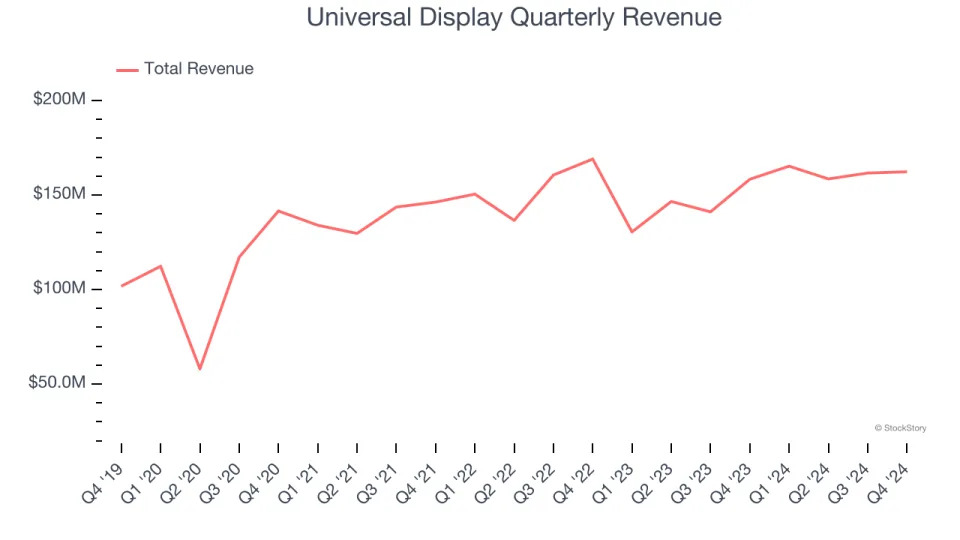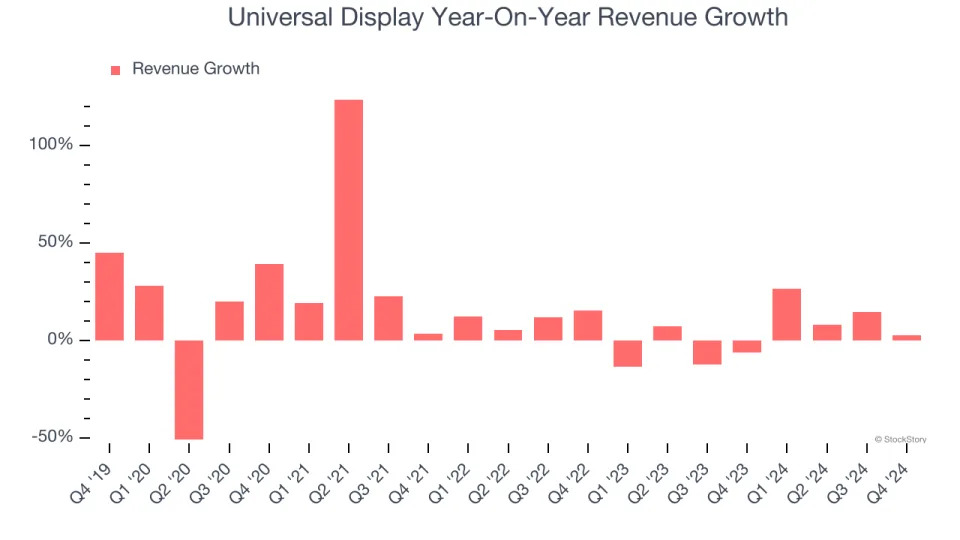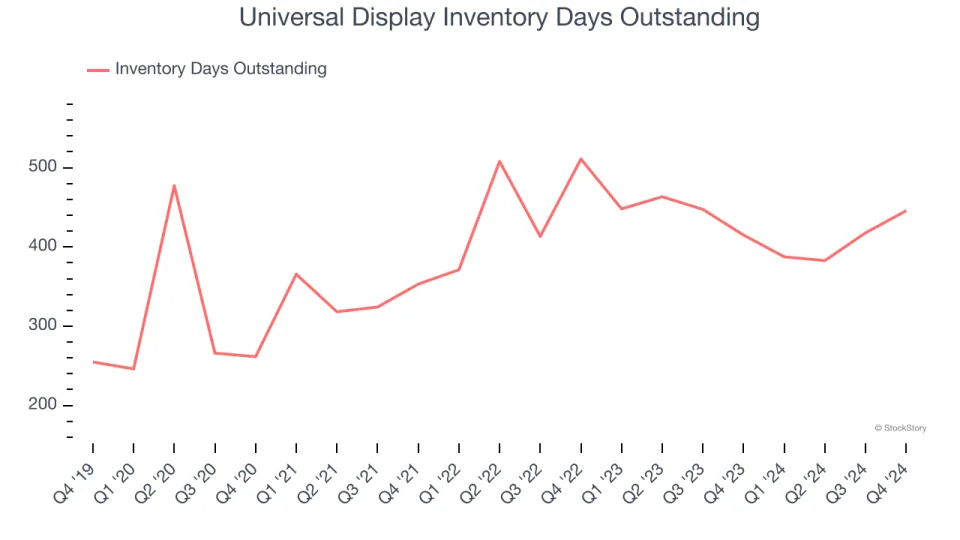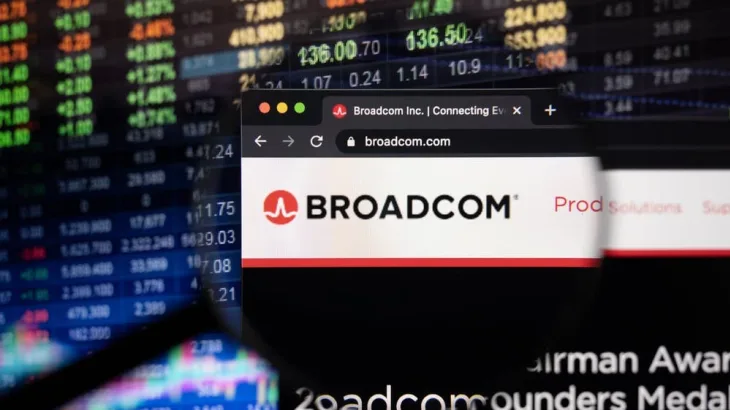
OLED provider Universal Display (NASDAQ:OLED) reported revenue ahead of Wall Street’s expectations in Q4 CY2024, with sales up 2.5% year on year to $162.3 million. On the other hand, the company’s full-year revenue guidance of $670 million at the midpoint came in 6.4% below analysts’ estimates. Its GAAP profit of $0.96 per share was 10.8% below analysts’ consensus estimates.
Is now the time to buy Universal Display? Find out in our full research report .
Universal Display (OLED) Q4 CY2024 Highlights:
“We are pleased to report that 2024 was a record-breaking year of solid financial performance,” said Brian Millard, Vice President and Chief Financial Officer of Universal Display Corporation.
Company Overview
Serving major consumer electronics manufacturers, Universal Display (NASDAQ:OLED) is a provider of organic light emitting diode (OLED) technologies used in display and lighting applications.
Analog Semiconductors
Demand for analog chips is generally linked to the overall level of economic growth, as analog chips serve as the building blocks of most electronic goods and equipment. Unlike digital chip designers, analog chip makers tend to produce the majority of their own chips, as analog chip production does not require expensive leading edge nodes. Less dependent on major secular growth drivers, analog product cycles are much longer, often 5-7 years.
Sales Growth
A company’s long-term sales performance can indicate its overall quality. Any business can put up a good quarter or two, but many enduring ones grow for years. Over the last five years, Universal Display grew its sales at a decent 9.8% compounded annual growth rate. Its growth was slightly above the average semiconductor company and shows its offerings resonate with customers. Semiconductors are a cyclical industry, and long-term investors should be prepared for periods of high growth followed by periods of revenue contractions.

We at StockStory place the most emphasis on long-term growth, but within semiconductors, a half-decade historical view may miss new demand cycles or industry trends like AI. Universal Display’s recent history shows its demand slowed as its annualized revenue growth of 2.5% over the last two years is below its five-year trend.

This quarter, Universal Display reported modest year-on-year revenue growth of 2.5% but beat Wall Street’s estimates by 8.7%.
Looking ahead, sell-side analysts expect revenue to grow 8.2% over the next 12 months, an improvement versus the last two years. This projection is above average for the sector and suggests its newer products and services will catalyze better top-line performance.
Today’s young investors likely haven’t read the timeless lessons in Gorilla Game: Picking Winners In High Technology because it was written more than 20 years ago when Microsoft and Apple were first establishing their supremacy. But if we apply the same principles, then enterprise software stocks leveraging their own generative AI capabilities may well be the Gorillas of the future. So, in that spirit, we are excited to present our Special Free Report on a profitable, fast-growing enterprise software stock that is already riding the automation wave and looking to catch the generative AI next .
Product Demand & Outstanding Inventory
Days Inventory Outstanding (DIO) is an important metric for chipmakers, as it reflects a business’ capital intensity and the cyclical nature of semiconductor supply and demand. In a tight supply environment, inventories tend to be stable, allowing chipmakers to exert pricing power. Steadily increasing DIO can be a warning sign that demand is weak, and if inventories continue to rise, the company may have to downsize production.
This quarter, Universal Display’s DIO came in at 446, which is 55 days above its five-year average, suggesting that the company’s inventory has grown to higher levels than we’ve seen in the past.

Key Takeaways from Universal Display’s Q4 Results
We were impressed by how significantly Universal Display blew past analysts’ revenue expectations this quarter. On the other hand, its full-year revenue guidance missed significantly and its EPS fell short of Wall Street’s estimates. Overall, this quarter could have been better. The stock traded up 1.7% to $149.76 immediately after reporting.
So should you invest in Universal Display right now? We think that the latest quarter is just one piece of the longer-term business quality puzzle. Quality, when combined with valuation, can help determine if the stock is a buy. We cover that in our actionable full research report which you can read here, it’s free .





